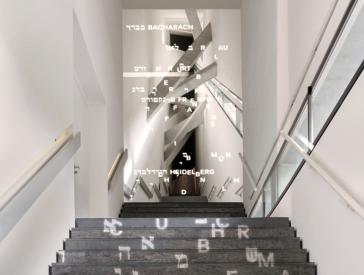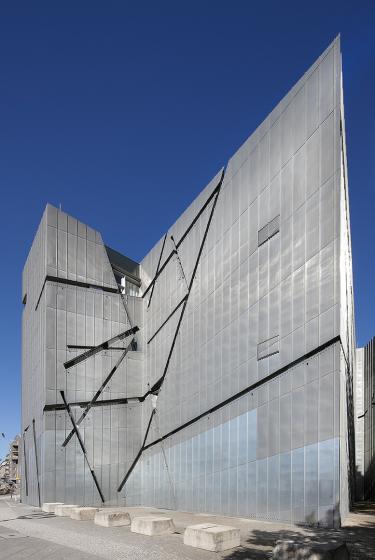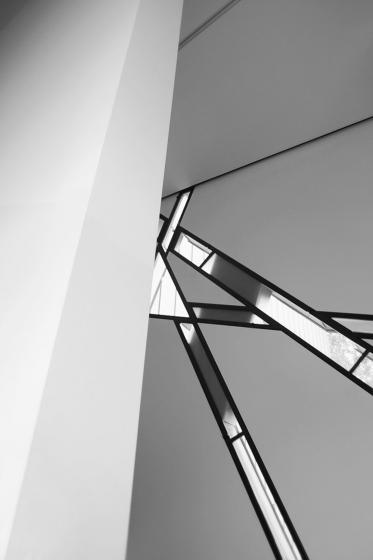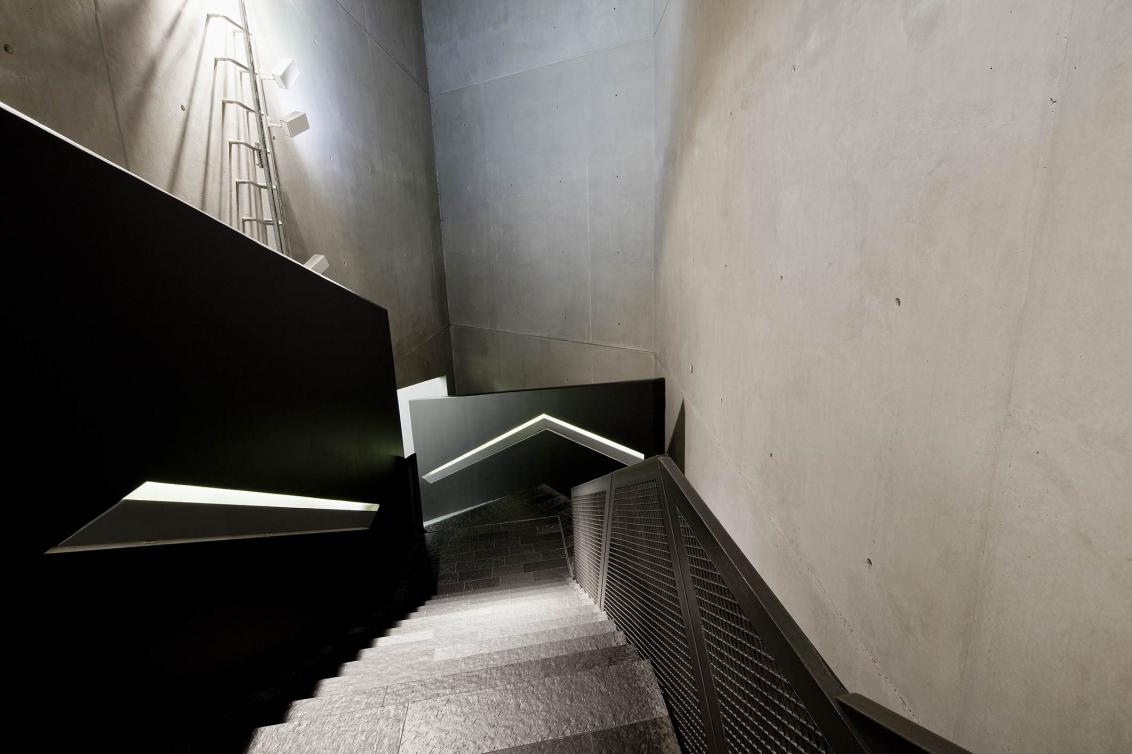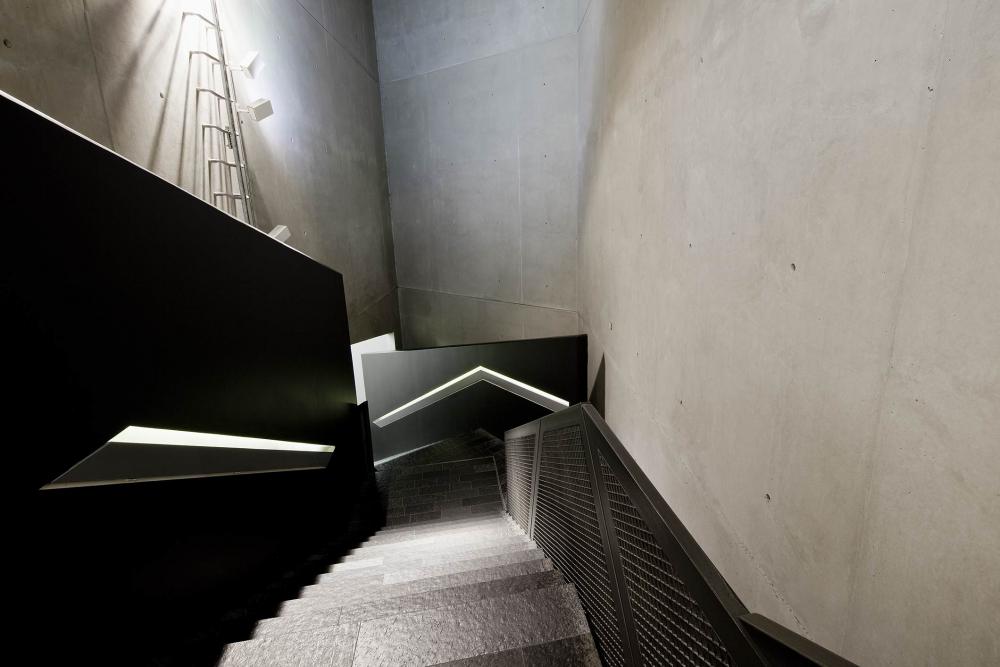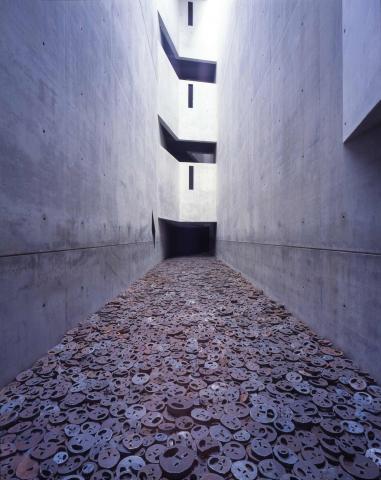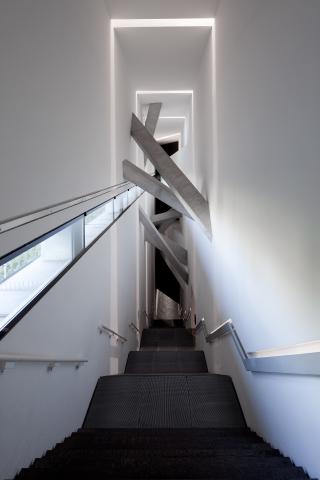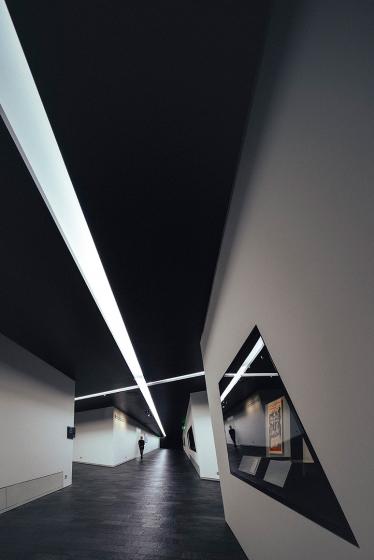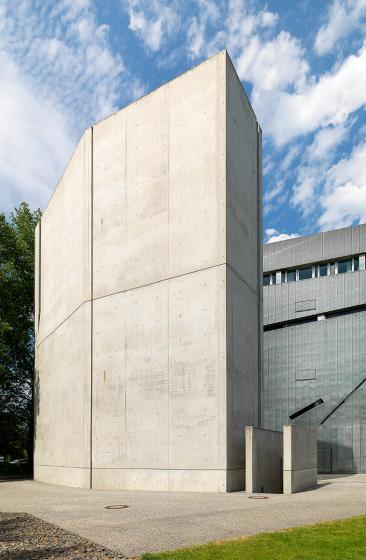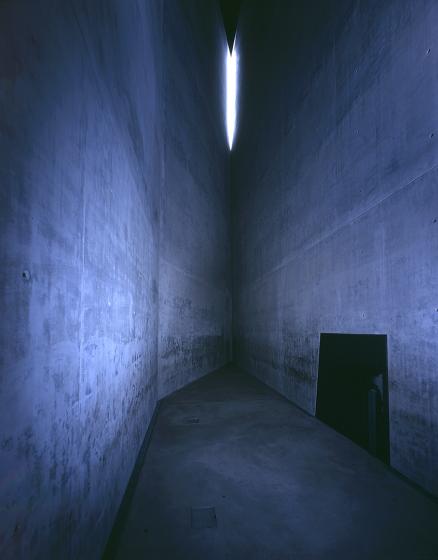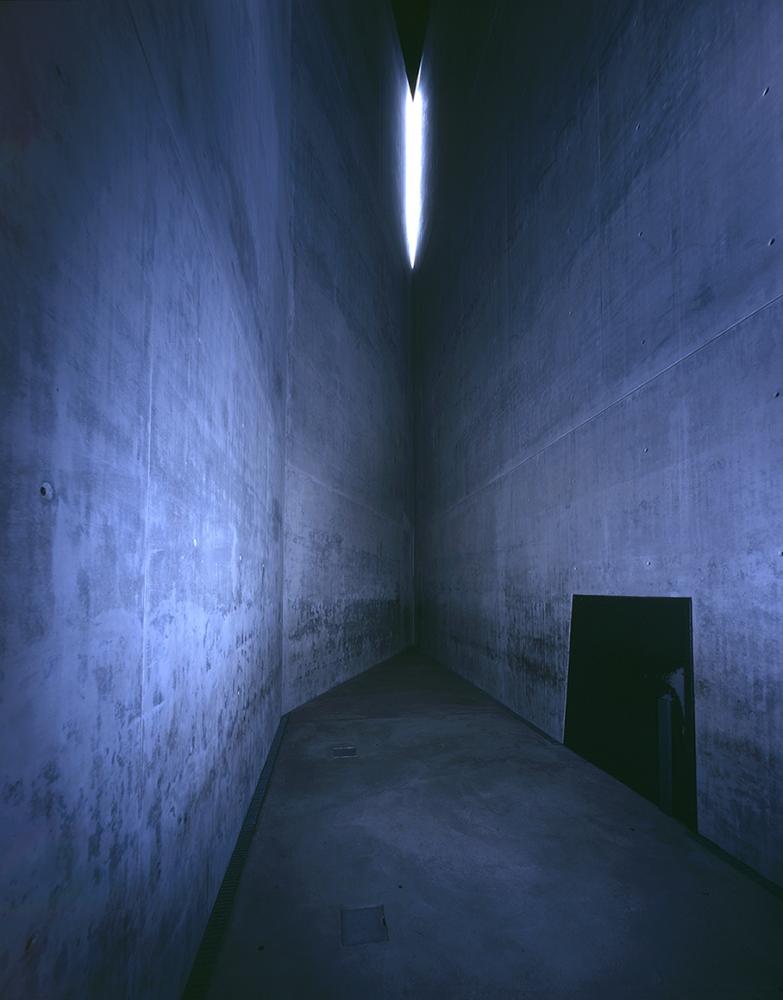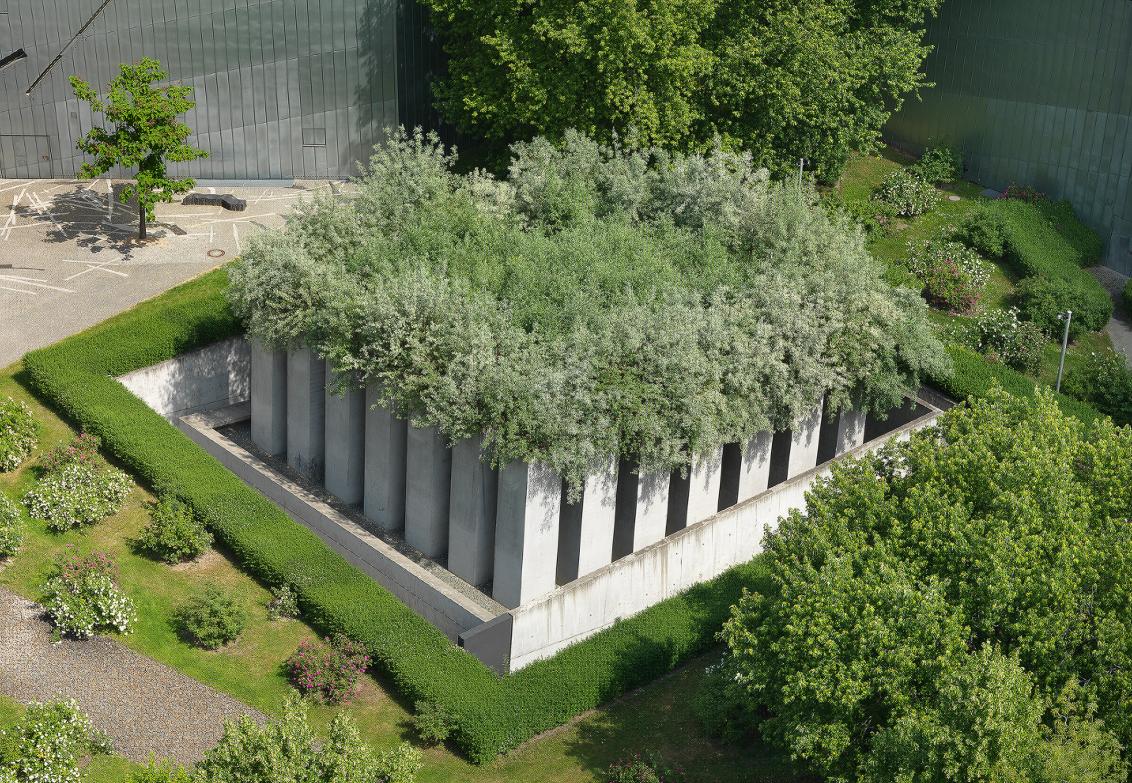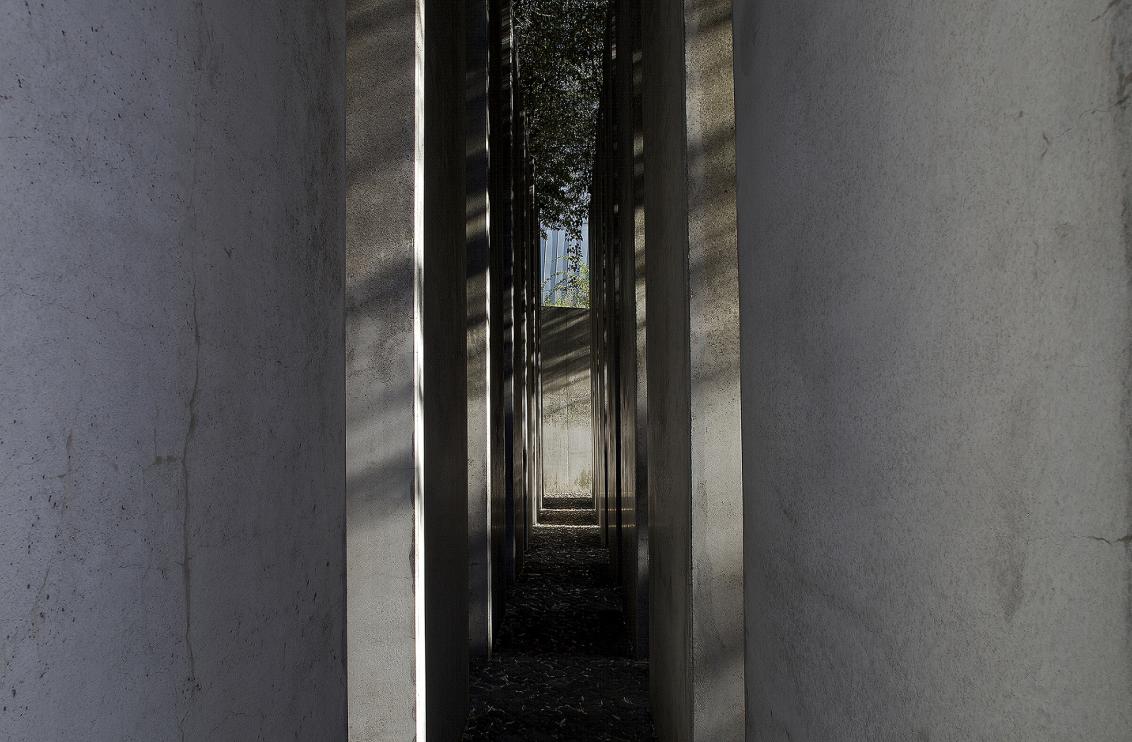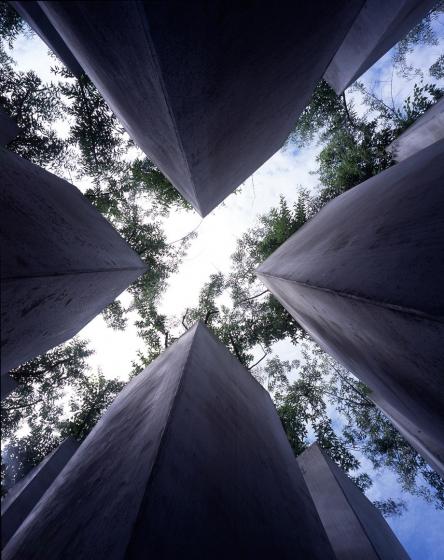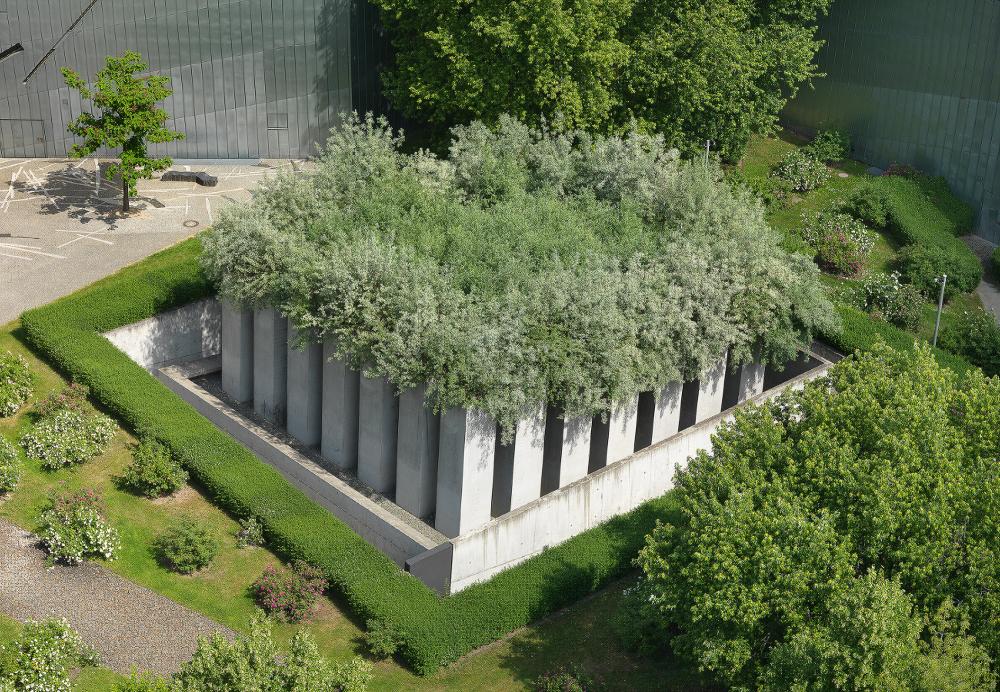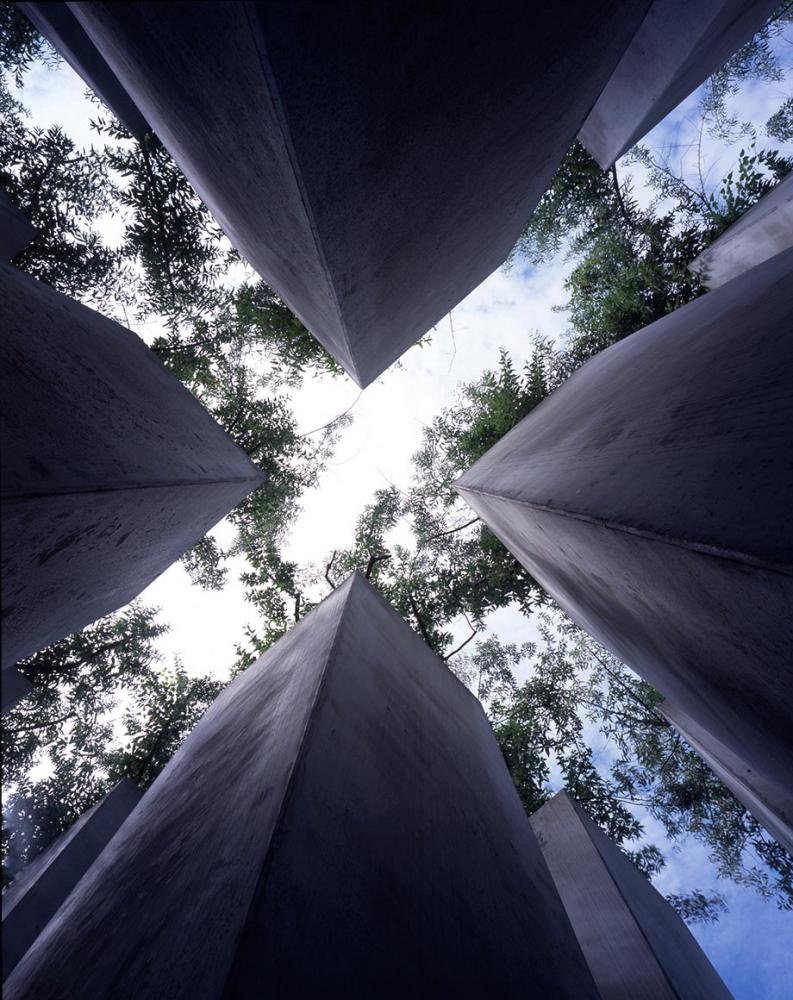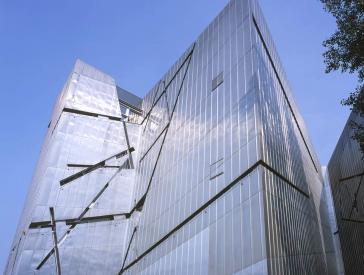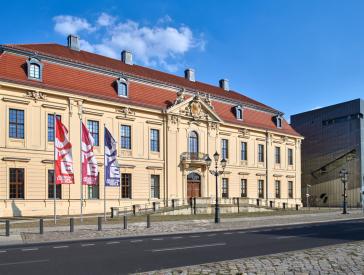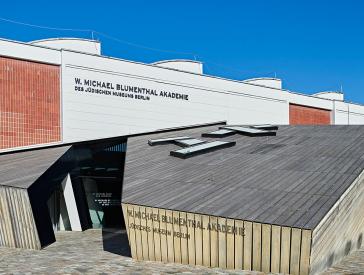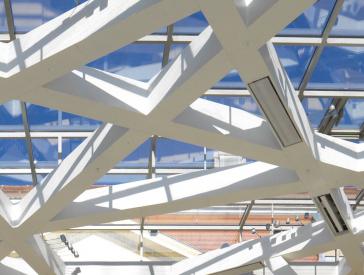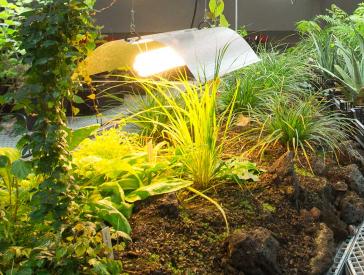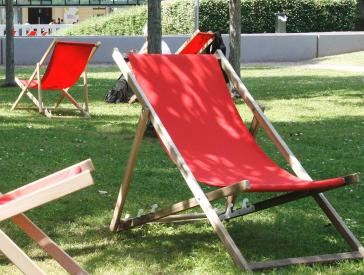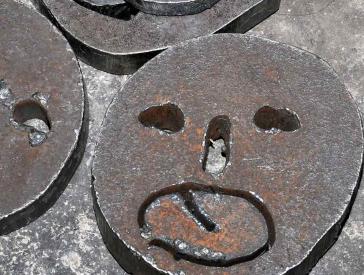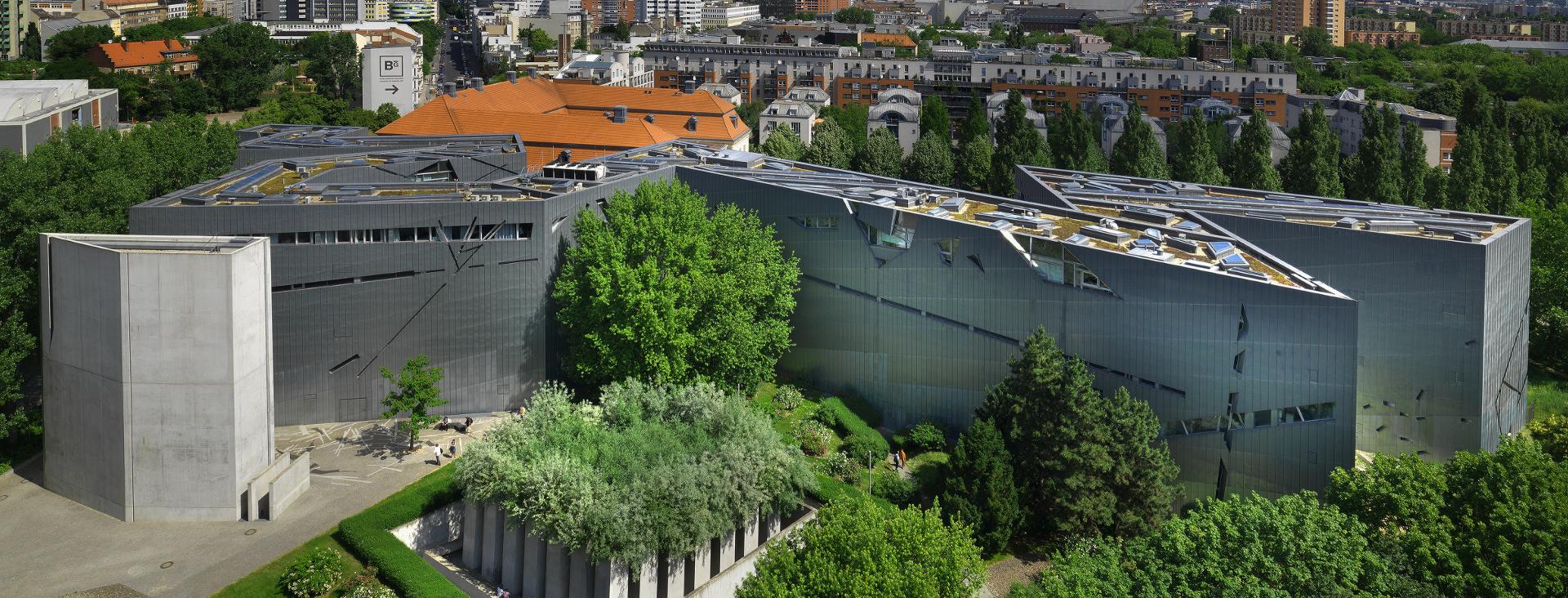
Der Libeskind-Bau
Architektur erzählt deutsch-jüdische Geschichte
Ein Zick-Zack-Bau aus Titanzink, unterirdische Achsen, schiefe Wände und unklimatisierte Betonschächte: Mit seinem Entwurf Between the Lines wollte der US-amerikanische Architekt Daniel Libeskind nicht einfach ein Museumsgebäude gestalten, sondern deutsch-jüdische Geschichte erzählen. Noch vor der Eröffnung des Jüdischen Museums Berlin im Herbst 2001 besichtigten knapp 350.000 Menschen den leeren Museumsbau, der immer noch zahlreiche Gäste aus dem In- und Ausland fasziniert. Heute befindet sich im Libeskind-Bau unsere Dauerausstellung. Das Gebäude lässt viele Interpretationen zu: Manche erinnert es an einen zerbrochenen Davidstern, andere an einen Blitz; bei vielen hinterlässt es ein Gefühl der Verunsicherung oder Desorientierung.
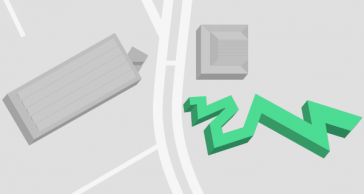
Wo
Libeskind-Bau
Lindenstraße 9–14, 10969 Berlin
Between the Lines: Daniel Libeskind und sein Entwurf
Mit seinem Entwurf Between the Lines (Zwischen den Linien) hatte der Architekt Daniel Libeskind 1989 den Wettbewerb für den „Erweiterungsbau des Berlin Museums mit Abteilung Jüdisches Museum“ gewonnen. Es war sein erster Entwurf, der tatsächlich baulich umgesetzt wurde.
Wer ist Daniel Libeskind?
Daniel Libeskind, geb. 1946 in Łódź, 1957 Emigration nach Israel, 1960 Übersiedlung in die USA, Architekt des Jüdischen Museums Berlin
Äußerlich ist der Libeskind-Bau eigenständig, vom Eingangsbereich im benachbarten barocken Altbau gelangen Besucher*innen nur durch eine unterirdische Verbindung in die Dauerausstellung. Den Grundriss entwickelte Daniel Libeskind aus zwei Linien: der sichtbaren Zick-Zack-Linie des Gebäudes und einer unsichtbaren geraden Linie. An den Kreuzungspunkten liegen die Voids, Leerräume, die das Gebäude vom Untergeschoss bis zum Dach durchziehen. Die sich kreuzenden und schräg verlaufenden Fenster wirken unsystematisch und lassen von außen keine Geschossgliederung erkennen.
Libeskind selbst nennt für seinen Entwurf vier Inspirationsquellen: Für die Verbindung zwischen jüdischer Tradition und deutscher Kultur vor der Schoa stehen jüdische und nicht-jüdische Berliner Persönlichkeiten wie Paul Celan, Max Liebermann, Heinrich von Kleist, Rahel Varnhagen oder Friedrich Hegel. Aus deren Adressen entstand ein Liniennetz, aus dem Libeskind die Struktur des Gebäudes und der Fenster entwickelte. Weitere Anregungen erhielt der Architekt aus der unvollendeten Oper Moses und Aron des Komponisten Arnold Schönberg, aus dem Gedenkbuch des Bundesarchivs für die Opfer der nationalsozialistischen Judenverfolgung in Deutschland (1933–1945) sowie aus Walter Benjamins Essay Einbahnstraße.
Der Libeskind-Bau
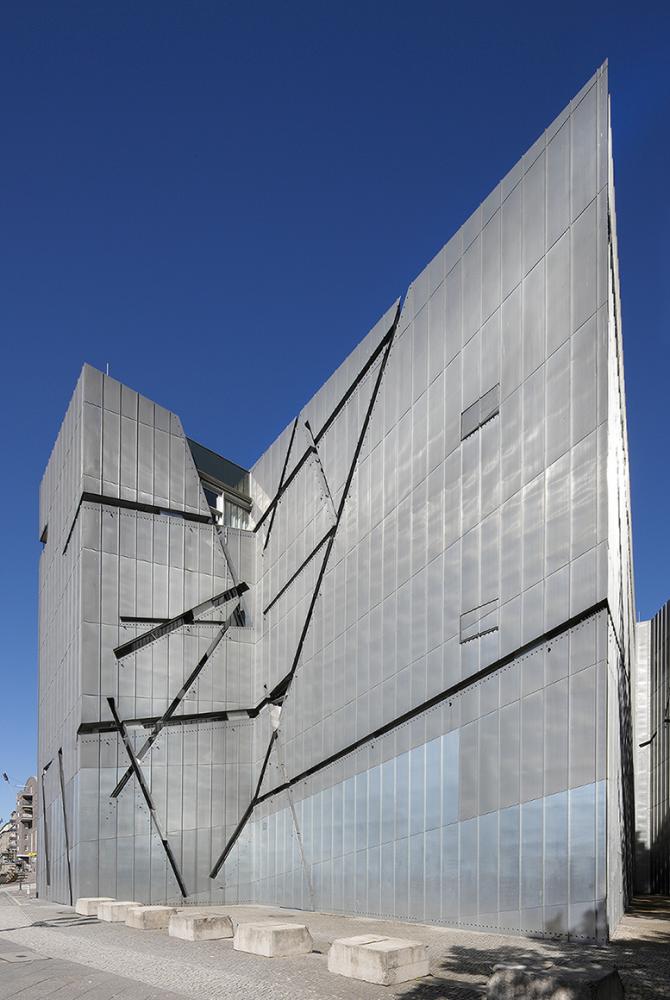
Die Titanzink-Fassade des Libeskind-Baus lässt von außen keine Geschossgliederung erkennen; Jüdisches Museum Berlin, Foto: Jens Ziehe
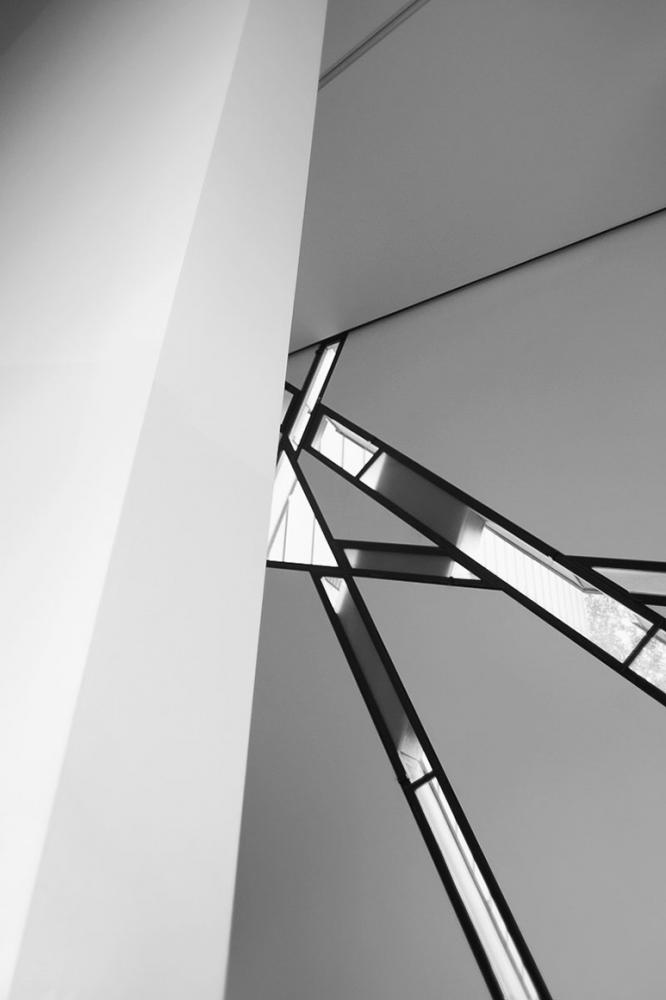
Aus den Adressen jüdischer und nicht-jüdischer Berliner Persönlichkeiten entwickelte Daniel Libeskind die Struktur der Fenster; Foto: Nina Raasch
Daniel Libeskind über die vielen Interpretationsebenen seines Gebäudes für das Jüdische Museum Berlin (in englischer Sprache); Jüdisches Museum Berlin 2017
Video-Transkription
„Das Gebäude hat viele Ebenen, auf denen es interpretiert werden kann. Das ist ein wenig wie ein Musikstück. Man kann es hören, man kann es genießen, man braucht nicht viel darüber zu wissen. Aber wenn man will, kann man sich irgendwo vor eine Wand stellen, vor ein Fenster, einen einzigen Schlitz. Es ist noch nicht einmal ein Fenster. Eigentlich gibt es ja tausende Fenster. Jedes ist anders. Und man kann hinausschauen und etwas sehen, vielleicht Häuser in der Ferne, vielleicht neu gebaut. Aber man sieht durch eine Botschaft hindurch, durch eine Verbindung, die es gab, die es noch immer gibt, in einer unsichtbaren Geschichte Berlins oder in einer nicht hörbaren Geschichte Berlins.“ (Daniel Libeskind im obenstehenden Video)
Die Voids
Die Voids durchziehen vertikal das Gebäude. Die Betonschächte sind unklimatisiert, weitgehend ohne künstliche Beleuchtung und können nur zum Teil betreten werden. In den oberen Ausstellungsgeschossen sind sie deutlich erkennbar durch die Void-Brücken markiert, deren Wände schwarz gestrichen sind. Einer der fünf Leerräume beherbergt die Installation Schalechet (Gefallenes Laub) des israelischen Künstlers Menashe Kadishman (weitere Informationen zur Installation Schalechet auf unserer Website).
Mit den Voids thematisiert Daniel Libeskind die physische Leere, die durch die Vertreibung, Zerstörung und Vernichtung jüdischen Lebens in der Schoa entstanden ist und die nicht nachträglich wieder gefüllt werden kann. Mit architektonischen Mitteln versucht Libeskind, diesen Verlust sicht- und fühlbar zu machen.
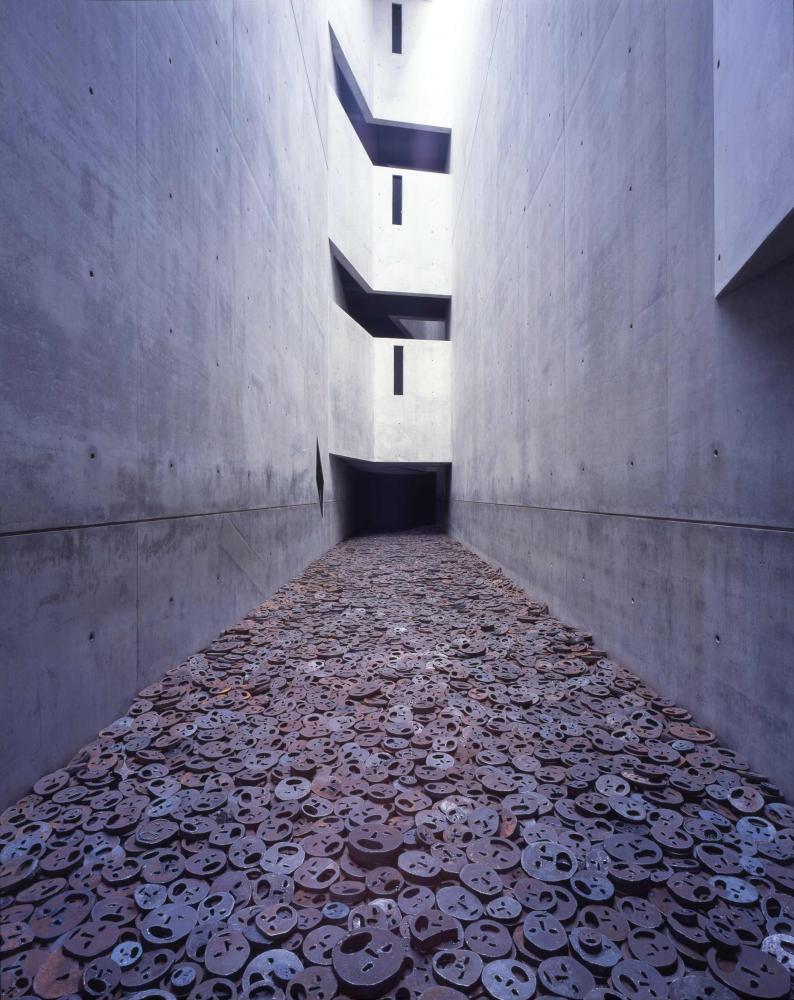
Memory Void mit der Installation Schalechet von Menashe Kadishman; Jüdisches Museum Berlin, Foto: Jens Ziehe
Daniel Libeskind über die Voids, die das Gebäude des Jüdischen Museums Berlin durchziehen (in englischer Sprache); Jüdisches Museum Berlin 2017
Video-Transkription
„Das englische Wort Void ist in der Architektur normalerweise ein technischer Fachbegriff dafür, dass es darüber oder darunter nichts gibt. Die Leere auf Deutsch. Ich wollte keinen Raum schaffen im Sinne dieses Fachbegriffs für Unbekanntes, sondern einen Ort der Begegnung, einen Raum der Abwesenheit, der doch ein realer, physischer Raum ist. Es ist kein lediglich konzeptueller Raum. Man kann ihn sehen. Man kann ihn durch die Ausstellungen hindurch spüren. Egal wie durchgängig oder und manchmal auch nicht durchgängig. Egal was man tut, es wird immer eine Diskontinuität durch diese Lücke bestehen. Die Lücke ist nicht besonders breit, aber es reicht, um Licht, einen Lichtstrahl zu erzeugen, der das Gebäude durchtrennt. Das Gebäude wird also von Licht durchschnitten. Und ein Großteil des Gebäudes erschließt sich durch Licht. Es ist eine durch Licht erzählte Geschichte – von der Dunkelheit, vom Betreten des herrlichen Barockgebäudes, in die Dunkelheit und dann zu den verschiedenen Achsen, die man wählen kann.“ (Daniel Libeskind im obenstehenden Video)
Die Achsen im Untergeschoss
Im Untergeschoss des Libeskind-Baus kreuzen sich drei Achsen, die symbolisch für die unterschiedliche Entwicklung jüdischer Lebensgeschichten in Deutschland stehen: die Achse des Exils, die Achse des Holocaust und die Achse der Kontinuität.
Entlang der Achsen zeigen wir Objekte, die Geschichten von Jüdinnen*Juden erzählen, die während der Zeit des Nationalsozialismus verfolgt und ermordet wurden oder emigrieren mussten. Die prominenteste Vitrine am Beginn der Achse des Exils fragt nach der Erhaltungsgeschichte von Objekten während der Nazi-Zeit: Erinnerungsstücke blieben erhalten, weil Familien sie mit in die Emigration nahmen. Raubgut wurde vereinzelt nach Kriegsende wiederentdeckt und restituiert. Die Sammlung des JMB ist somit eng mit der Katastrophe des Holocaust verbunden.
Am Kreuzungspunkt der drei Achsen befindet sich die Rafael Roth Galerie. Seit 2020 finden Sie hier die Videoarbeit Drummerrsss des israelischen Künstlers Gilad Ratman.
Die Achse der Kontinuität mündet in einer steilen Treppe, die am oberen Ende mit einer Lichtprojektion bespielt wird. Über 82 Stufen gelangen die Besucher*innen zum Eingang der Dauerausstellung im 2. Obergeschoss.
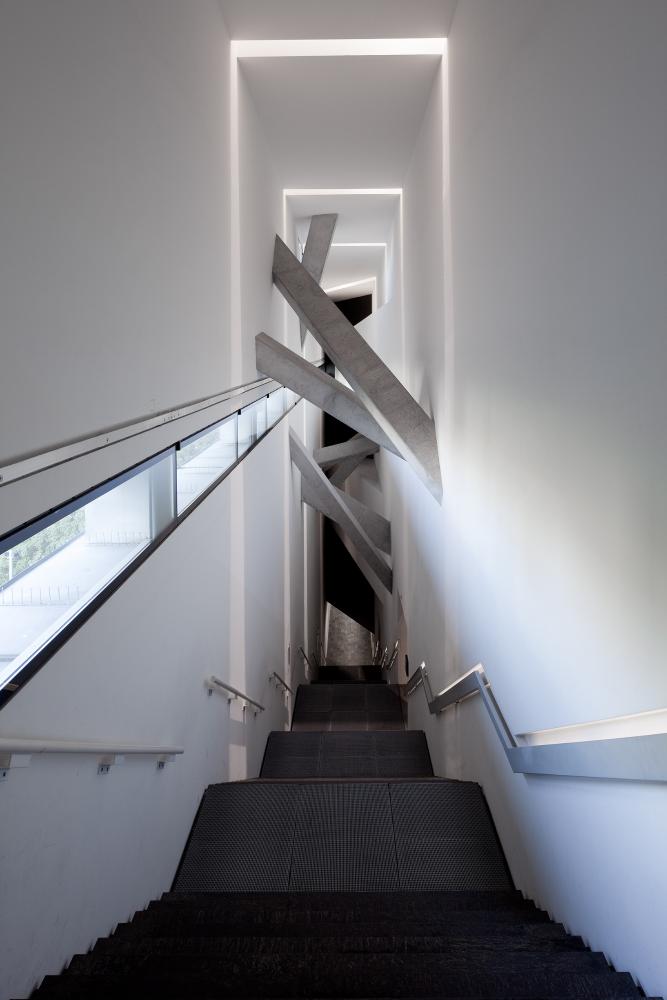
Diese lange Treppe führt von der Achse der Kontinuität in die Dauerausstellung; Jüdisches Museum Berlin, Foto: Thomas Bruns
Der Holocaust-Turm
Die Achse des Holocaust endet im Voided Void (entleerte Leere), auch Holocaust-Turm genannt, einem isolierten Gebäudesplitter, der nur unterirdisch mit dem Libeskind-Bau verbunden ist. Tageslicht dringt ausschließlich durch einen schmalen Schlitz in den unbeheizten Betonschacht, Außengeräusche sind nur gedämpft zu hören. Bei vielen Besucher*innen löst der sogenannte Holocaust-Turm ein Gefühl der Beklemmung aus.
Die Achsen und der Holocaust-Turm
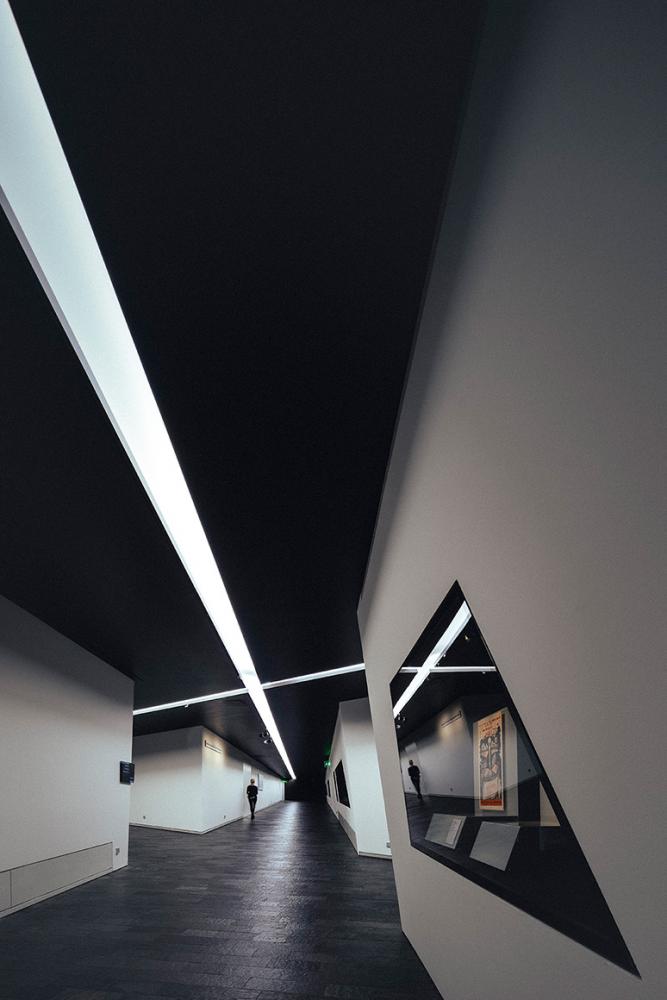
Die Achse des Exils und die Achse des Holocaust im Untergeschoss des Libeskind-Baus; Jüdisches Museum Berlin, Foto: Martin Foddanu
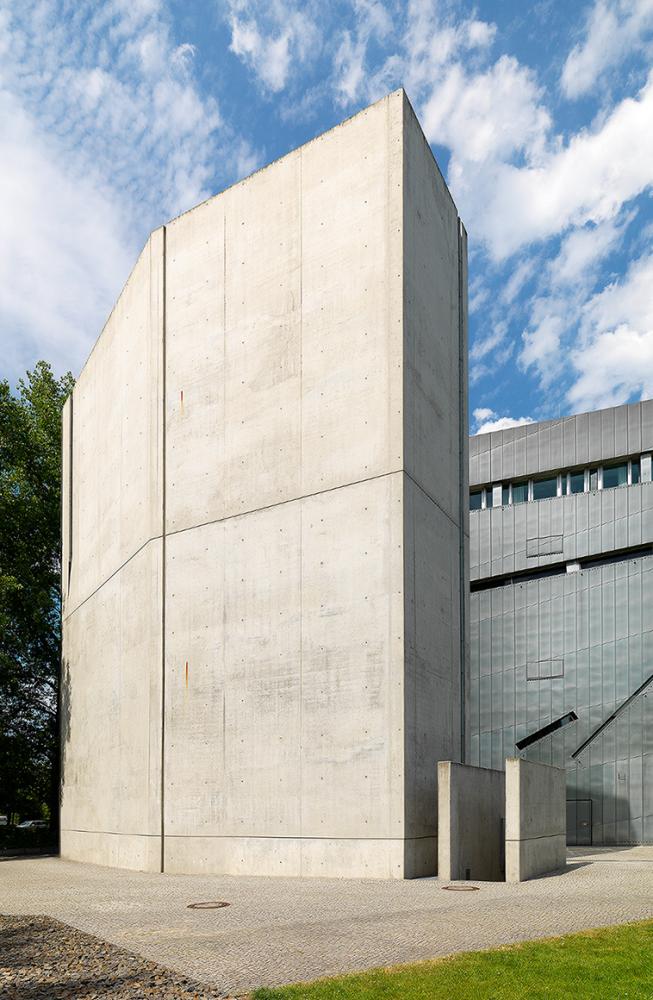
Der sogenannte Holocaust-Turm ist ein isolierter Gebäudesplitter, der nur unterirdisch mit dem Libeskind-Bau verbunden ist; Jüdisches Museum Berlin, Foto: Jens Ziehe
Der Garten des Exils
Die Achse des Exils führt in den Garten des Exils, der außerhalb des Libeskind-Baus liegt. 49 quadratisch angeordnete Stelen stehen auf einer schiefen Ebene. Daraus wachsen Ölweiden als Symbol der Hoffnung. 48 Stelen sind mit Erde aus Berlin gefüllt, die 49. Stele in der Mitte enthält Erde aus Jerusalem.
Der Garten des Exils erzeugt bei den Besucher*innen aufgrund der Schräglage ein Gefühl des Schwindels und der Desorientierung, die einzige Vegetation befindet sich in unerreichbarer Höhe. Mit dieser räumlichen Erfahrung wollte Daniel Libeskind auf die mangelnde Orientierung und Haltlosigkeit verweisen, die Emigrant*innen empfanden, die aus Deutschland vertrieben wurden.
Impressionen aus dem Garten des Exils
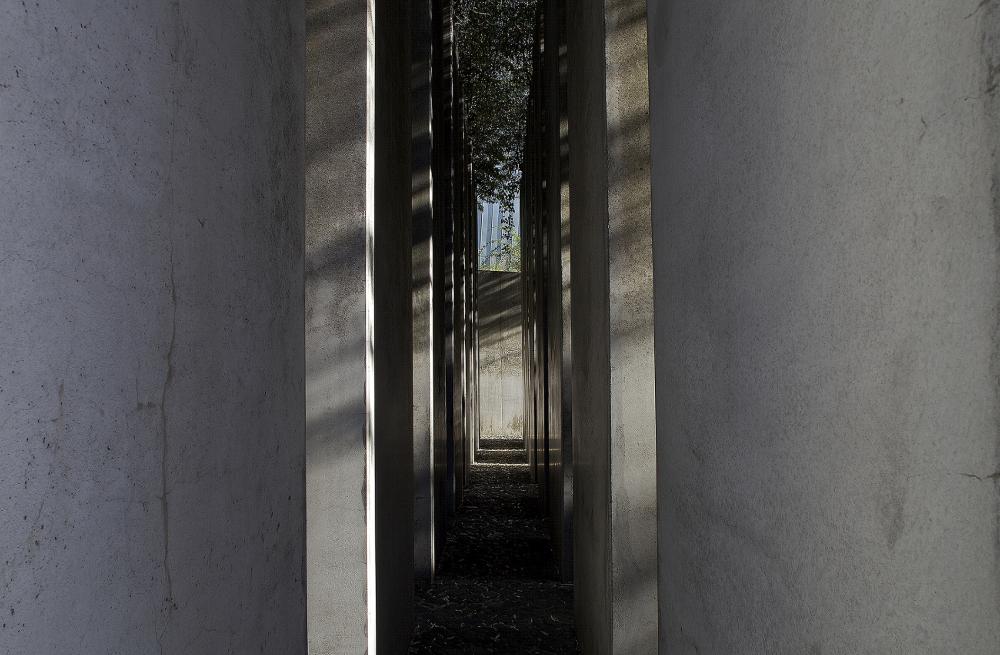
Die 49 quadratisch angeordneten Stelen stehen auf einer schiefen Ebene; Foto: Burkhard Katz, Hamburg
Literaturhinweise zum Entwurf von Daniel Libeskind
- Dorner, Elke, Daniel Libeskind. Jüdisches Museum Berlin, Berlin 1999.
- Jüdisches Museum Berlin. Architekt Daniel Libeskind mit einem Fotoessay von Hélène Binet, Amsterdam/Dresden 1999.
- Daniel Libeskind, Zwischen den Linien. Der Museumsbau soll jüdische Geschichte erschließen und sichtbar machen, in: Spezial der Allgemeinen Jüdischen Wochenzeitung: Jüdisches Museum Berlin. Sonderpublikation zur Eröffnung (2001), S. 66–72.
- Pieper, Katrin, „Between the Lines“. Architektonische Geschichtsreflexionen des Jüdischen Museums Berlin, in: Christina Jostkleigreve u.a. (Hg.): Geschichtsbilder. Konstruktionen – Reflexionen – Transformationen, Köln u.a. 2005, S. 371–385.
- Willemeit, Thomas, „Oh Wort, du Wort, das mir fehlt!“. Musik und Architektur bei Daniel Libeskind, in: Archithese 28 (1998) Nr. 5, S. 18–24.
Unsere Gebäude: Barock und Daniel Libeskind (6)
